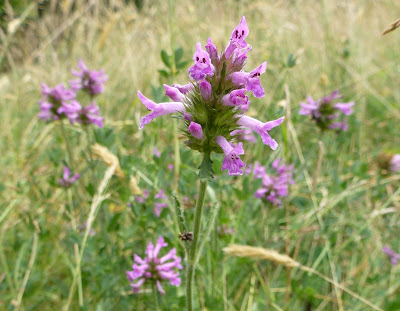Four of us had been with the creators of Poker Wood, Malcolm and Jane Key, in the Picos de Europa, so that and mention of 500 pyramidal orchids were good reasons to arrange what was, for me, an overdue visit. (I suggest that readers of this blog click through to Poker Wood to read about Malcolm and Jane’s project to create a new woodland near their home in Suffolk.)
We
met on hardstanding by the main road, then our vehicles were led to a hidden
entrance to this private wood, to park by the custom-designed barn – home to
various bits of kit plus, helpfully, a loo and a small kitchen with a kettle.
 |
| In Poker Wood. |
After coffee, four Honeyguiders plus a friend of our hosts spent a delightful morning walking roughly a figure-of-eight around this 22-acre mix of new woodland and meadows. We started in a wide ride where a southern hawker dragonfly flew then perched in characteristic upright fashion. Ann is always alert to small things: today a 22-spot ladybird.
Being a sunny day there were butterflies everywhere: meadow browns, ringlets, skippers and more. The collage photo below has three that stayed still enough to be photographed: large skipper, ringlet and 6-spot burnet moth.

Large skipper (left), 6-spot burnet moth and ringlet.
The meadows and sunny glades are quite a feature of Poker Wood. So too is the range of tree species, some ‘inherited’, some added. These included wild service trees, small leaved-limes (we were surprised how large the early-stage leaves are on these after being cut back) and smooth-leaved elm.
Lots of tree leaves = lots of galls on these, and Chinery’s Britain’s Plant Galls book came in very useful.
Those pyramidal orchids were as impressive as we hoped, and no-one disputed Malcolm’s estimate of 500 spikes. They were well spread though one section of the wood, and I counted 50 while standing at one spot alone.
Back at the barn, a sparrowhawk flew over as we ate picnic lunches. Then Malcolm asked me to come and identify a flower recently discovered: it was the lovely betony, an addition to Poker Wood’s species lists.
Betony.
Chris
Durdin








No comments:
Post a Comment